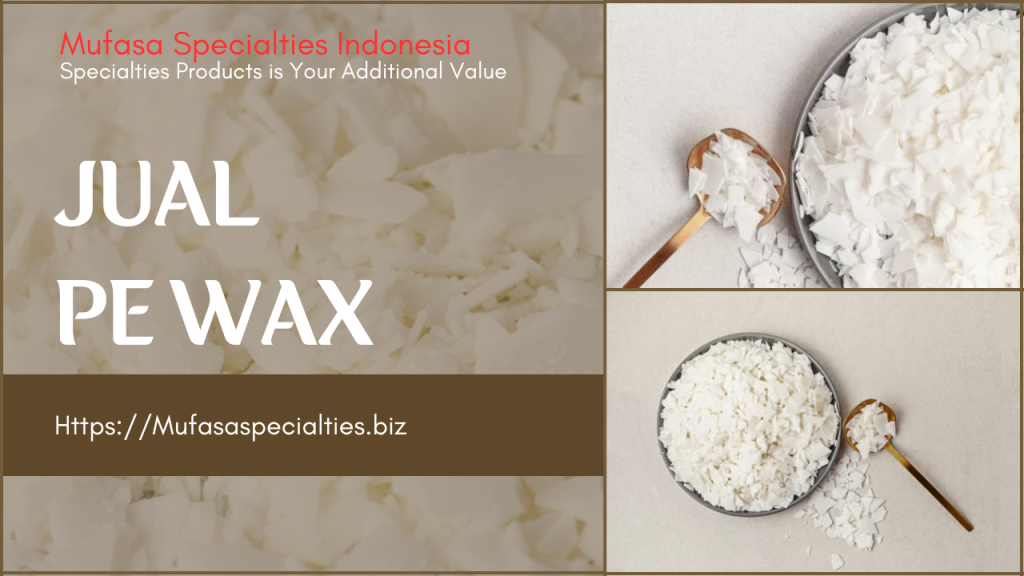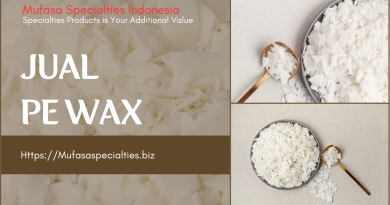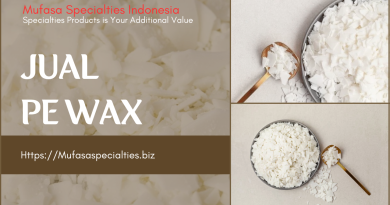
Supplier PE Wax
In the vast domain of paints and coatings, additives play a pivotal role in tailoring the properties of a formulation to meet specific performance requirements. Among the numerous additives used, Supplier PE Wax stands out for its versatility, efficiency, and compatibility with a broad range of systems. This synthetic wax is extensively employed across various industrial applications due to its lubricating, abrasion-resistant, and anti-settling properties. Consequently, as the demand for high-performance surface coatings continues to rise, so too does the relevance of PE Wax in the formulation strategies of modern paints and coatings.
The Role of Supplier PE Wax in Paints and Coatings: A Comprehensive Overview
Polyethylene Wax is a low molecular weight polymer of ethylene. It is typically available in powder, granule, flake, or emulsion form. Its chemical stability, low viscosity, and excellent hardness make it a highly valued material in surface applications. PE Wax is either synthesized through polymerization of ethylene or as a by-product of polyethylene production. Depending on the production process, it can be classified into three major types:
-
Low Molecular Weight PE Wax
-
Oxidized PE Wax
-
Micronized PE Wax
Each of these types, moreover, offers unique advantages and is selected based on the performance goals of a coating formulation.
Importance in Paints and Coatings
The integration of PE Wax into paints and coatings provides numerous benefits that enhance both the aesthetic and functional properties of the final film. These benefits include:
-
Improved Scratch Resistance
-
Enhanced Slip and Mar Resistance
-
Surface Smoothing and Gloss Control
-
Better Pigment Dispersion
-
Anti-blocking Properties
As a result, these characteristics are highly desirable in industrial coatings, decorative paints, wood coatings, automotive finishes, and powder coatings. By leveraging the expertise and product offerings from a reliable Supplier PE Wax, formulators can meet both current and future market demands with confidence.
Mechanism of Action
The effectiveness of PE Wax in coatings is derived from its ability to migrate to the surface during the drying or curing process. During film formation, the wax particles position themselves at the interface, creating a uniform layer that protects the surface and imparts functional advantages. In addition, the fine distribution of PE Wax throughout the matrix helps reduce inter-coat adhesion and improves the tactile experience of the coated surface.
Furthermore, PE Wax’s crystalline nature contributes to enhanced surface hardness, which is essential in abrasion-prone environments such as industrial floors, automotive exteriors, and heavy-duty equipment.
Forms of PE Wax Used in Coatings
To understand its versatility better, it is useful to explore the different forms in which PE Wax is available:
-
Powdered PE Wax
This form is widely used in solvent-based and powder coating systems. The micronized particles are easily dispersible and provide excellent matting, slip, and rub resistance. -
Emulsified PE Wax
Ideal for water-based coatings, this form enables easy incorporation and uniform distribution in aqueous systems. Consequently, it is frequently used in furniture lacquers and waterborne architectural coatings. -
Oxidized PE Wax
This variety includes polar functional groups such as carboxylic acids, which improve compatibility with resin systems. It is particularly effective in hybrid formulations and high-performance coatings. -
Dispersions
PE Wax dispersions offer ready-to-use formulations for quick integration into waterborne paints, reducing processing time and effort. To sum up, choosing a trusted Supplier PE Wax is essential. With continuous innovation and a strong focus on sustainability, the role of PE Wax in coating technologies is set to expand even further.
Applications PE Wax in Various Coating Systems
Depending on the desired outcome, PE Wax is integrated into a variety of coatings:
1. Architectural Coatings
PE Wax enhances durability and resistance in architectural paints, making surfaces less prone to stains, scuffs, and wear. Additionally, it aids in uniform flow and leveling, ensuring an aesthetically pleasing finish.
2. Industrial Coatings
In industrial applications, PE Wax improves abrasion and chemical resistance, which is vital for surfaces exposed to harsh conditions. Moreover, it also assists in controlling gloss levels, enabling customized visual effects.
3. Automotive Coatings
Automotive coatings require excellent mar resistance and smooth finish. PE Wax reduces swirl marks and scratches on high-gloss finishes while maintaining surface clarity. Thus, it significantly contributes to long-lasting visual appeal.
4. Wood Coatings
Wood coatings benefit from PE Wax through improved sandability, water repellency, and surface hardness. Furthermore, the wax also facilitates better application by reducing friction during brush or roller use.
5. Can and Coil Coatings
These coatings demand excellent slip properties and chemical resistance, which PE Wax provides effectively. By migrating to the surface, it forms a protective layer that resists handling damage. Formulators aiming to stay competitive will benefit from partnerships with reputable Supplier PE Wax entities who can provide technical insight and cutting-edge material solutions.
6. Printing Inks and Overprint Varnishes
Although not the focus here, it’s worth noting that PE Wax is also vital in the printing sector. It provides rub resistance and anti-blocking features in overprint varnishes, which aligns with similar needs in coatings.
PE Wax Functional Benefits in Detail
Slip and Mar Resistance
Slip resistance is critical in many coating applications, especially where friction reduction is necessary. PE Wax provides a smooth surface that minimizes drag and prevents surface marring caused by physical contact. As such, it enhances user experience and extends product life.
Scratch Resistance
Micronized PE Wax particles increase surface hardness, making it difficult for external forces to cause visible damage. Consequently, this property is crucial in automotive and furniture coatings where visual appearance must be preserved.
Anti-blocking
Blocking occurs when coated surfaces stick to each other during storage. PE Wax mitigates this by creating a barrier layer that resists adhesion, enhancing product durability and packaging safety.
Gloss Control
PE Wax can reduce gloss levels in coatings, providing a matte or satin finish. Notably, this is particularly desirable in wood and wall paints where high gloss may be undesirable. Working with a global Supplier PE Wax ensures access to a wide range of materials and solutions tailored for regional market needs.
Water Resistance
In waterborne systems, PE Wax contributes to the hydrophobic nature of the film. This property protects substrates from moisture, thereby increasing the life of the product.
Integration and Compatibility
PE Wax is compatible with various resin types including:
-
Acrylics
-
Polyurethanes
-
Epoxies
-
Polyesters
-
Alkyds
Therefore, its integration into both solvent-based and water-based systems makes it an ideal candidate for formulators seeking broad performance enhancement without compromising system integrity.
PE Wax Processing Techniques
Incorporating PE Wax into paint and coating systems requires attention to dispersion techniques. For best results, the wax must be uniformly distributed. Here are some methods:
-
High-speed stirring
-
Ball milling
-
Bead milling
-
Ultrasonic dispersion (for emulsions)
Proper dispersion, in turn, prevents clumping and ensures a consistent surface finish.
Regulatory and Environmental Aspects
With growing emphasis on sustainability, many suppliers now offer eco-friendly PE Wax grades that comply with regulations such as:
-
REACH
-
RoHS
-
VOC Directives
Additionally, some products are derived from recycled or bio-based polyethylene, which aligns with green chemistry principles.
Trends and Innovations
As the coating industry evolves, the demand for smart functionalities like self-cleaning, anti-graffiti, and thermal regulation is growing. Suppliers are modifying PE Wax chemically to respond to these trends. For example, grafted PE Wax with silicon or fluorine groups can impart enhanced surface energy modulation and non-stick properties.
Moreover, nano-structured PE Waxes are emerging, offering even better surface hardness and transparency. These innovations, thus, are setting new benchmarks for coating performance.
Choosing the Right PE Wax
Selecting the correct grade of PE Wax involves considering:
-
Particle size distribution
-
Melting point
-
Polarity
-
Carrier system (solvent or water-based)
-
Application method
Working closely with a knowledgeable Supplier PE Wax helps formulators identify the most suitable variant for their systems. A reliable Supplier PE Wax will also provide technical support, quality assurance documentation, and formulation guidelines.
Global Market Dynamics
The demand for PE Wax in coatings is growing, driven by:
-
Increased infrastructure development
-
Automotive sector expansion
-
Rising demand for water-based and low-VOC coatings
-
Emphasis on durable, long-lasting finishes
Accordingly, Asia-Pacific, especially China and India, are significant consumers due to rapid industrialization. Meanwhile, North America and Europe are focusing on innovation and compliance.
Case Studies
Industrial Floor Coatings
A European coating manufacturer incorporated oxidized PE Wax into their epoxy floor coating to achieve enhanced abrasion resistance and slip reduction. As a result, the formulation achieved a 35% improvement in wear resistance, validated through accelerated testing.
Decorative Paints
A leading brand in decorative paints switched from traditional waxes to micronized PE Wax provided by their Supplier PE Wax. Consequently, this change led to improved flow leveling, smoother surfaces, and fewer customer complaints related to finish irregularities.
PT. Mufasa Specialties Indonesia is Reliable Supplier PE Wax with High Quality Product and Good Price. We are Serving and Delivered Area such Jakarta Bandung Semarang Jogja Surabaya Medan and Batam
One of the key challenges in using PE Wax is ensuring compatibility and dispersion, especially in high-viscosity or complex systems. Using pre-dispersed concentrates or emulsions, as offered by experienced Supplier PE Wax, can simplify incorporation.
In high-gloss coatings, wax migration may slightly reduce clarity. However, this issue can be mitigated by choosing the correct melting point and particle size.
The future of PE Wax in paints and coatings looks promising. Innovations in bio-based waxes, hybrid wax composites, and multifunctional additives are driving its evolution. Given its diverse advantages, the ability of PE Wax to balance aesthetics, protection, and sustainability makes it a critical component in next-generation formulations.
In conclusion, Polyethylene Wax has proven to be a highly versatile and beneficial additive in the paints and coatings industry. Its properties—ranging from slip and scratch resistance to gloss control and water repellency—make it indispensable in numerous formulations. Whether in industrial applications, architectural designs, or specialized protective coatings, PE Wax delivers consistent performance and durability.

